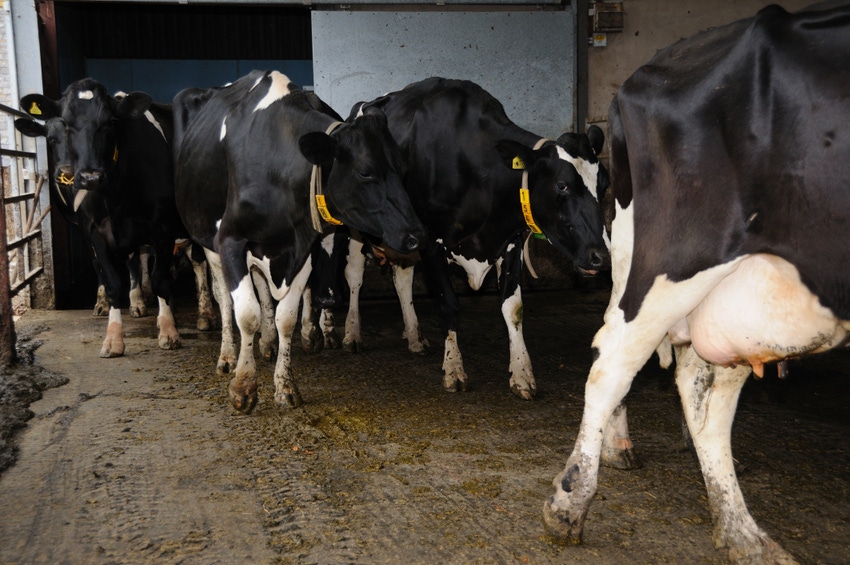Interdigital hyperplasia in cattle had been attributed mostly to poor hygiene, but new research finds genetic component.
January 10, 2020

The occurrence of interdigital hyperplasia in cattle has mostly been attributed to poor hygiene conditions in the barn, but researchers at Martin Luther University Halle-Wittenberg (MLU) and Georg August University Göttingen in Germany have now shown that the disease is primarily genetic.
The team, led by professor Hermann Swalve, found a farm where the disease occurred frequently and was able to identify the gene responsible. As a result, the disease may now be contained through selective breeding, an announcement from MLU said.
"We rarely see such a case where everything fits perfectly together," said Swalve, professor of animal breeding at the Institute for Agricultural & Nutritional Sciences at MLU. Many factors have to fit in order to find a single gene that is primarily responsible for a disease.
Swalve's team, whose findings have now been published in the journal Frontiers in Genetics, succeeded in making the discovery because his research group had been working for years with large cow databases in Germany. In the course of their work, they came across a farm in which interdigital hyperplasia — also known as limax or tyloma — occurred frequently.
According to MLU, 3-8% of all cows in Germany suffer from the disease at some stage in their lives, but it mainly affects older cows. In the condition, an additional "stunted" claw emerges between the two claws of the hoof and spreads apart the real claws.
"This results in tears to the skin, which, in turn, provide openings for bacteria and other infectious agents," Swalve said. The animals become lame, and their life spans are shortened.
"We previously carried out studies on the genetics of the disease, but we didn't have enough affected animals at our disposal, so it was difficult to obtain statistical certainty," Swalve explained. It was, therefore, a stroke of luck to find a farm in northwestern Germany where almost 60% of the animals were affected by it.
In a genome-wide association study, they compared 45,000 small DNA segments, so-called single nucleotide polymorphisms, from healthy and sick cows. Initially, they identified two sites that could be related to the disease. One was the gene for tyrosine kinase receptor 2 (ROR2).
"Next, we compared our results with medical studies on humans and found that this gene also plays a role in the development of human limbs," Swalve said.
The team from the University of Göttingen, led by professor Bertram Brenig, subsequently provided proof that the ROR2 gene actually is involved with development of the disease. His research group sequenced the entire gene segment and found that a mutation leads to the exchange of an amino acid in the affected cows.
In further experiments, Brenig was also able to prove that the defect leads to an alteration in protein concentration. "Once we were able to show that the mutation influences gene expression, we were able to conclusively explain how it is connected to the disease," Brenig said.
Swalve said he was surprised that the genetic background of the disease had been ignored for so long — even though, as early as 1952, Richard Götze, an internationally acclaimed veterinarian from Hanover, Germany, suspected that interdigital hyperplasia was almost exclusively genetic.
MLU said Götze's discovery did not find its way into animal breeding, but with this new study, this assumption has been confirmed. The disease can now be tackled through selective breeding, the researchers said.
You May Also Like


.png?width=300&auto=webp&quality=80&disable=upscale)
